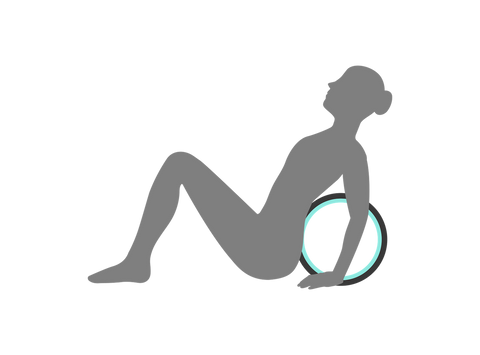What is dynamic stretching?
Dynamic stretching is a hybrid between warm up exercises and stretches that help the muscle and joint you’re exercising go through the full range of motion. Dynamic stretching helps prepare your body for performance and helps prevent injuries from working out because they’re often done before an activity that requires repetitive motion, such as weight lifting, running, or a number of sports. For example, if you’re a runner, you might do a variety of leg swings (shown below) before your run to help your muscles and joints warm up.
Dynamic stretching is not the same as static stretching. In fact, dynamic stretching is a great thing to do before an exercise OR stretching routine to help warm up your muscles and joints before they are challenged. Static stretches involve holding a position for a period of time to lengthen the muscle and improve flexibility; whereas, dynamic stretching is meant as a warm up and involves movement. Dynamic stretching is generally done pre-workout and static stretching is done post-workout.
Always consult your doctor before starting a new exercise routine.
Benefits of dynamic stretching
- Improves speed, agility, and acceleration
- Reduces muscle tension
- Strengthens and tones muscles
- Reduces the risk of injury during performance
- Increases muscle temperature and blood flow for your workout
Here are a few examples of dynamic stretching you can do pre-workout to help your joints and muscles stay young:
Hip circles

- With your hands on your hips, stand on one leg.
- Bring your lifted leg slightly out to the side, keeping it straight.
- Begin you move your whole leg in circular motions, bringing your hip joint into full motion.
- Do this on both sides.
Lunge with a stretch

- Lunge forward with your left leg, without resting your back knee to the ground.
- While you’re lunged down, lift your right arm straight up in the air and reach it up and over to the left, stretching your right side.
- Repeat on both sides.
Arm circles

- Standing with your feet shoulder width apart, lift up both arms out to your sides so they are parallel with the floor.
- Move your arms in circular motions, moving your shoulder joints in full motion.
Spinal rotations

- Standing with your feet shoulder width apart, lift up both arms out in front of you parallel to the floor.
- Twist your whole torso to one side and then the other, keeping your feet planted in the ground. Make sure to bring your gaze with you as you go.
Front swings (legs)

- Putting all your weight on your left foot, swing your right leg forward and backward as far as you can, gradually increasing swinging height for each rep.
- Repeat on both sides. Note: If you find it hard to balance hold a walking stick in your hand on the opposite side you’re swinging your leg.
Side cross swings (legs)

- Putting all your weight on your left foot, swing your right leg side to side in front then behind your left leg as far as you can, gradually increasing swinging height for each rep.
- Repeat on both sides.
Bonus stretch with a tool!
Roll out on the Chirp Wheel to help stretch the muscles in your back to reduce back pain before and after a workout. For more ideas on how to use the Chirp Wheel, check out this blog post!
Back roll
Sit and lean back.

- Sit on the ground with knees bent and feet firmly planted.
- Place the Chirp Wheel+ against your back in alignment with your spine. Take some time to center yourself and find balance even on the ground.
- Lean back gently to transfer your weight to the wheel. Relax and find balance in this position before lifting your hips.
Lift hips.

- Rest your hands on the ground, the wheel, or your chest for balance. Do whichever feels the most comfortable for you.
- Lift your hips upward while relaxing your back. Find balance with your hips lifted before rolling on the wheel.
- Don’t tense up! The more you relax your back, the better it will feel.
Roll back and forth.
- Begin to roll back and forth on the wheel by bending and straightening your legs. Use your hands for balance. If one spot on your back needs an extra massage, stop rolling to put pressure on that spot. Or switch to a smaller wheel.
- Roll out for 3 to 5 minutes. Length of preferred use will vary by individual.
- Relax your head back to avoid neck pain.
References
Chertoff, J. (2019, May 23). The benefits of dynamic stretching and how to get started. Retrieved from https://www.healthline.com/health/exercise-fitness/dynamic-stretching
HSS. (2020). Static vs. dynamic stretches: tips and techniques. Retrieved from https://www.hss.edu/conditions_dynamic-static-stretching.asp#dynamic








